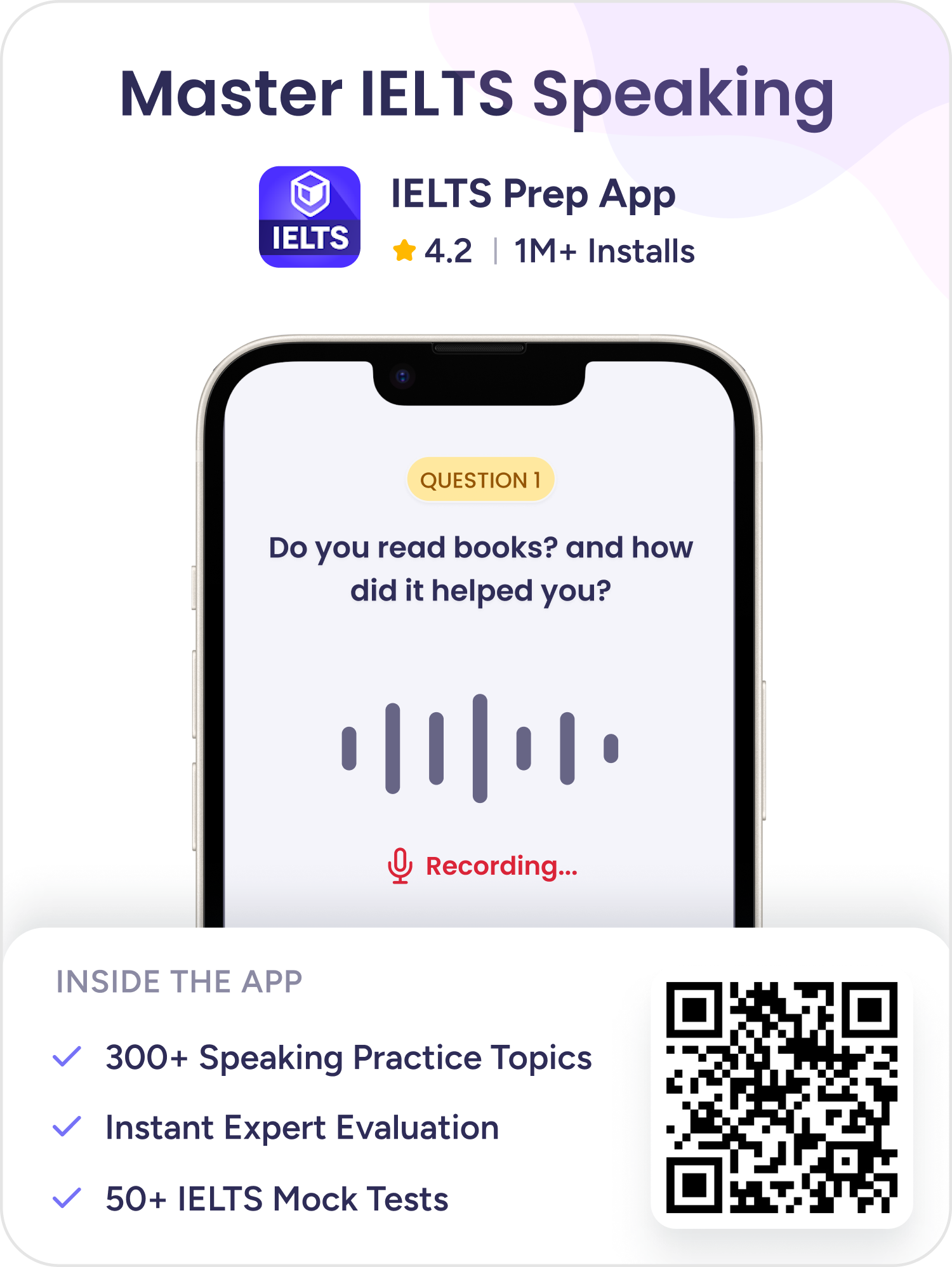Describe A Poisonous Plant You Know About: IELTS Speaking Cue Card
You should say
- What plant is it?
- Where is it found?
- What are the benefits and side effects of this plant?
- How do you know about it?
24 unique answers with expert feedback
Band 7
00:00
/
00:00
Follow up questions
Follow up questions
What other poisonous plants are you aware of?
How can people protect themselves from poisonous plants?
Have you ever encountered a poisonous plant in real life?
Band 6-7
00:00
/
00:00
Follow up questions
Follow up questions
What are some other poisonous plants you are aware of?
How can people safely use medicinal plants like the poppy?
What measures can be taken to prevent the misuse of poisonous plants?
Band 6-7
00:00
/
00:00
Follow up questions
Follow up questions
What precautions should people take when encountering unknown plants?
Can you name some common poisonous plants and their effects?
Why do you think people are often unaware of poisonous plants?
Practice other cue cards
Band 5-6
00:00
/
00:00
Follow up questions
Follow up questions
What are some common poisonous plants found in your country?
Can you explain how to identify a poisonous plant?
What precautions should people take when foraging for wild plants?
Band 5-6
00:00
/
00:00
Follow up questions
Follow up questions
What are some common uses of the datura plant in medicine?
How can people safely handle poisonous plants like datura?
Are there any other poisonous plants you are aware of?
Cue 1:What plant is it?
- Begin by naming the poisonous plant clearly and confidently.
- Provide a brief description of its appearance and characteristics.
Example
The plant I want to talk about is called 'Aconitum', commonly known as Monkshood. It has beautiful blue flowers and is often found in the mountainous regions of India. However, it is important to note that all parts of this plant are highly toxic.
Cue 2:Where is it found?
- Mention specific regions or habitats where the plant grows.
- You can include details about its natural environment or any specific locations in India.
Example
Aconitum is primarily found in the Himalayan regions, particularly in states like Himachal Pradesh and Uttarakhand. It thrives in moist, shady areas and is often seen growing in the wild, near streams and in meadows.
Cue 3:What are the benefits and side effects of this plant?
- Discuss any medicinal uses the plant may have, while emphasizing its dangers.
- Explain the side effects and potential risks of handling or consuming the plant.
Example
While Aconitum has been used in traditional medicine for its analgesic properties, it is extremely dangerous. Even a small amount can cause severe poisoning, leading to symptoms like nausea, vomiting, and even heart failure. Therefore, it is crucial to handle this plant with care.
Cue 4:How do you know about it?
- Share a personal experience or story related to the plant.
- Explain how you learned about its properties and dangers.
Example
I first learned about Aconitum during a nature walk in the Himalayas with my friends. A local guide pointed it out and warned us about its toxicity. Since then, I have researched more about it, and I always remind others to be cautious around such plants.
Conclusion
Example
In conclusion, Aconitum is a fascinating yet dangerous plant that highlights the importance of respecting nature. While it has some medicinal uses, its toxicity makes it essential to approach it with caution. I believe that awareness about such plants can help prevent accidents and promote safety in nature.
Following this structure will ensure you cover all the essential points while providing a clear and engaging response to the cue card topic.
Tips to answer this Cue Card
1: Vague Descriptions
Using vague language can make your answer unclear. It's important to provide specific details about the plant to engage the listener and demonstrate your knowledge.
Tip
Use descriptive adjectives and specific examples when talking about the plant's characteristics and effects.
2: Ignoring Side Effects
Failing to mention the side effects of the plant can lead to an incomplete answer. It's crucial to discuss both benefits and risks to show a balanced understanding.
Tip
Always include both the benefits and potential dangers of the plant to provide a comprehensive response.
Lack of Personal Connection
Not sharing how you know about the plant can make your answer less engaging. Personal experiences can add depth and interest to your response.
Tip
Include a personal story or experience related to the plant to make your answer more relatable and memorable.
IELTS Cue Cards asked last week
Reported by Leap students who gave IELTS
All Answers
Here are all the answers by real-users practicing speaking for IELTS Cue Cards on our IELTS Prep App.
Band 7
Band 6-7
Band 6-7
Band 6
Band 6
Band 6
Band 6
Band 6
Band 6
Band 6

Explore
473 Cue Cards

Personal Experience
121 Cue Cards

Describing People
66 Cue Cards

Travel
47 Cue Cards

Personal Development
45 Cue Cards

Hobbies/Interests
44 Cue Cards
Environment/Culture
39 Cue Cards

Tech/Media
27 Cue Cards

Education/Work
19 Cue Cards

Social Issues
19 Cue Cards

Describe An Object
16 Cue Cards
Business/Shopping
16 Cue Cards

Food/Cooking
8 Cue Cards
Fashion
6 Cue Cards
Get the IELTS Prep App
4.2
1M+ Installs
Get the IELTS Prep App
4.2
1M+ Installs
Get the app link on your phone
Or download app from





